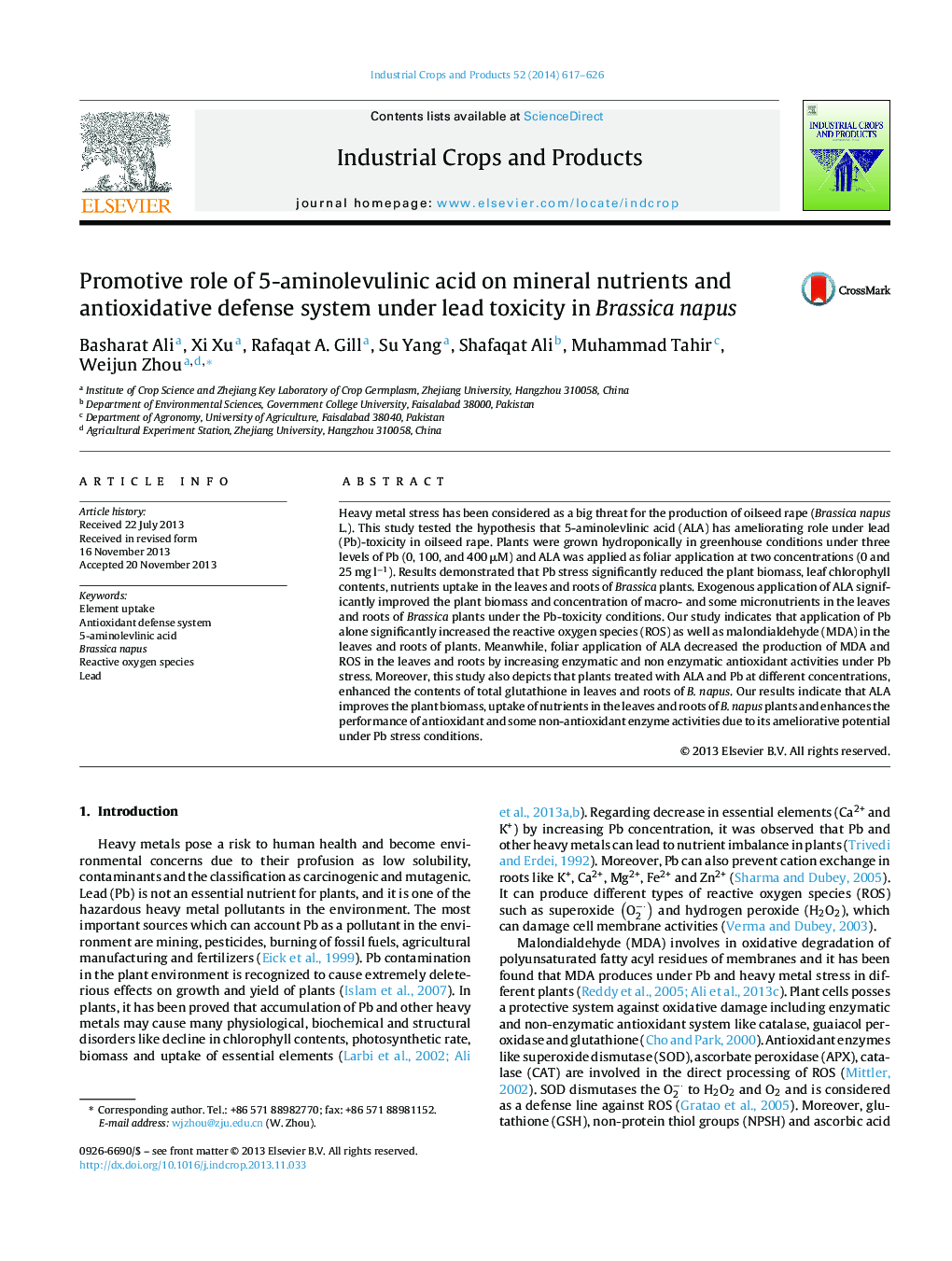| Article ID | Journal | Published Year | Pages | File Type |
|---|---|---|---|---|
| 4513433 | Industrial Crops and Products | 2014 | 10 Pages |
•Pb stress reduced the plant biomass and nutrients uptake in Brassica plants.•ALA alleviated the toxic effect of Pb and improved the morpho-physiology of plants.•Application of ALA decreased the production of reactive oxygen species and MDA.•ALA enhanced the antioxidants defense system in plants under Pb stress.•Exogenous application of ALA improved chlorophyll contents and nutrients uptake in plants.
Heavy metal stress has been considered as a big threat for the production of oilseed rape (Brassica napus L.). This study tested the hypothesis that 5-aminolevlinic acid (ALA) has ameliorating role under lead (Pb)-toxicity in oilseed rape. Plants were grown hydroponically in greenhouse conditions under three levels of Pb (0, 100, and 400 μM) and ALA was applied as foliar application at two concentrations (0 and 25 mg l−1). Results demonstrated that Pb stress significantly reduced the plant biomass, leaf chlorophyll contents, nutrients uptake in the leaves and roots of Brassica plants. Exogenous application of ALA significantly improved the plant biomass and concentration of macro- and some micronutrients in the leaves and roots of Brassica plants under the Pb-toxicity conditions. Our study indicates that application of Pb alone significantly increased the reactive oxygen species (ROS) as well as malondialdehyde (MDA) in the leaves and roots of plants. Meanwhile, foliar application of ALA decreased the production of MDA and ROS in the leaves and roots by increasing enzymatic and non enzymatic antioxidant activities under Pb stress. Moreover, this study also depicts that plants treated with ALA and Pb at different concentrations, enhanced the contents of total glutathione in leaves and roots of B. napus. Our results indicate that ALA improves the plant biomass, uptake of nutrients in the leaves and roots of B. napus plants and enhances the performance of antioxidant and some non-antioxidant enzyme activities due to its ameliorative potential under Pb stress conditions.
